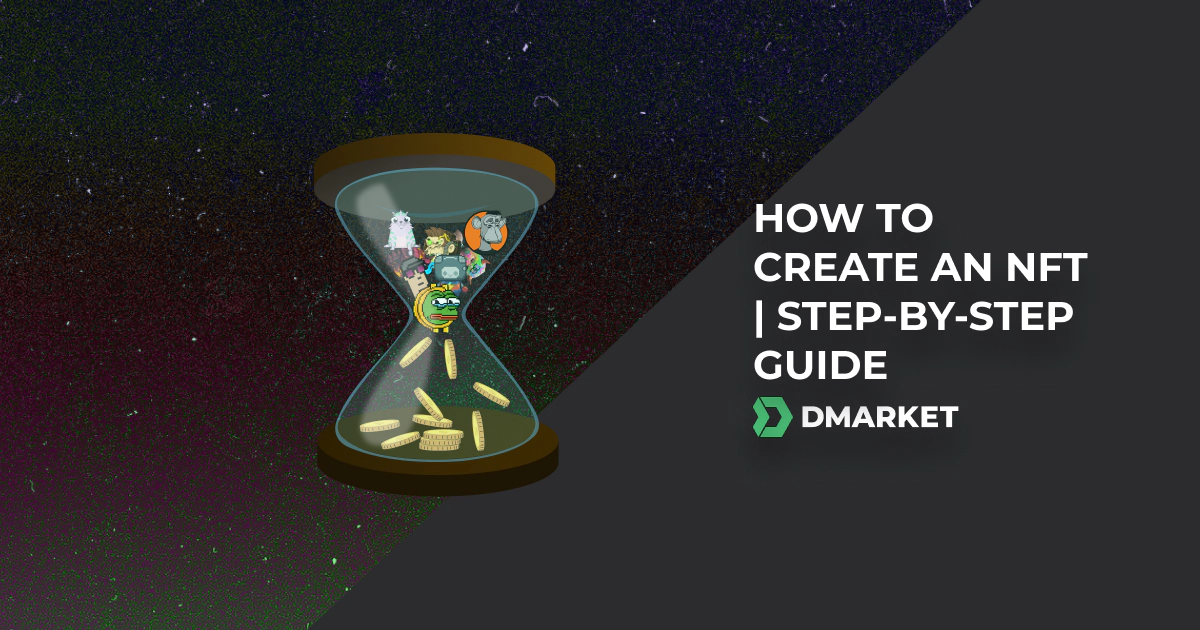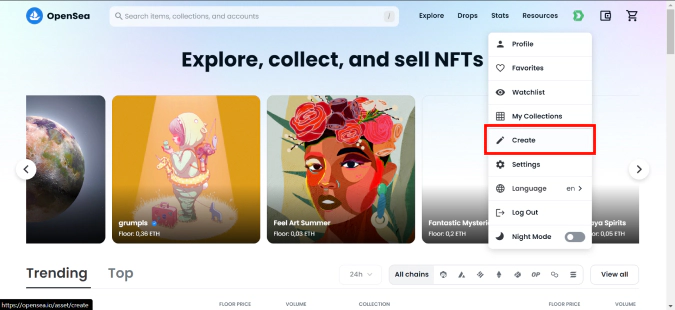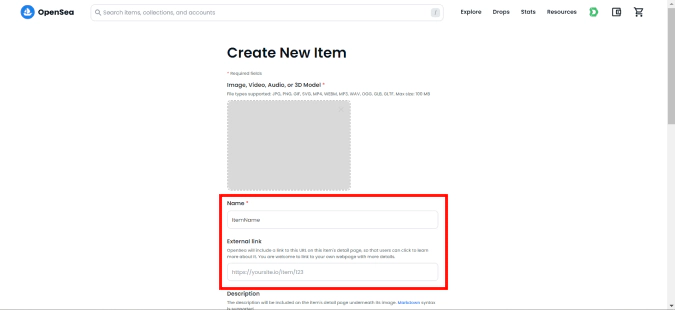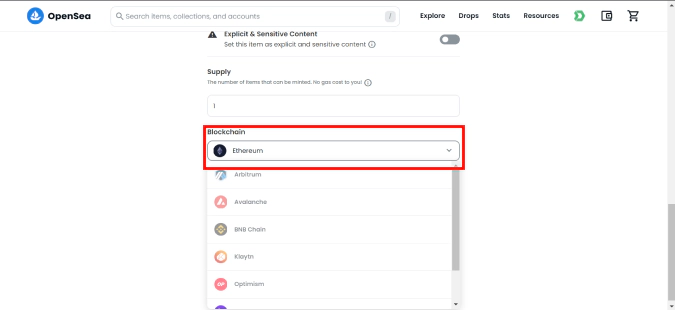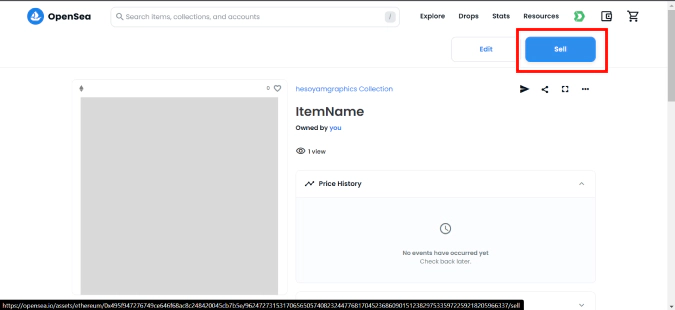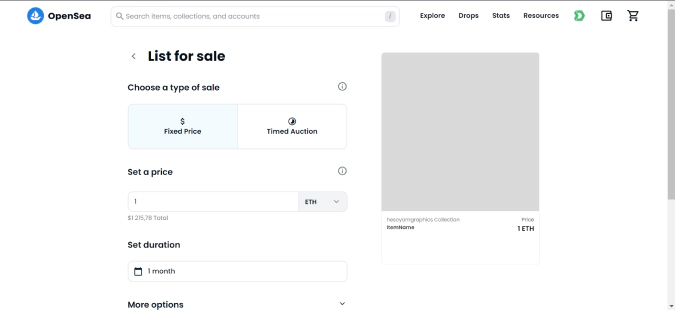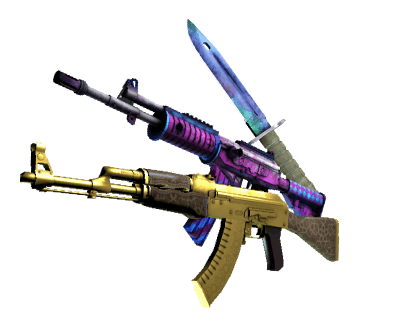How to Create an NFT | Step-by-Step Guide
The process of creating an NFT consists of artistic and technical aspects. There is no guide that can really help you with the first one. It’s always up to you how to express your vision of beauty and which tools to use. With the technical part everything is much simpler.
In fact, you might have difficulties only with your first Non-Fungible Token — and only because you don’t know what steps to take. Then, you will have a clear path to follow with every new artwork.
This guide on how to create an NFT helps you figure out the technical steps. It focuses on the choices you have to make as an NFT artist and hidden obstacles you may face.
Step 1. Get Your Art Ready
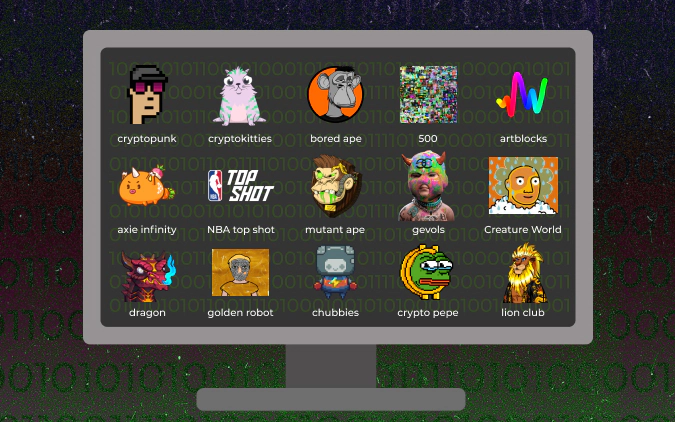
Any digital file can be an NFT: images, audio, video, etc. With such a great creative range, it’s important to understand what makes Non-Fungible Tokens (and their creators) successful.
We discussed this topic in the article about the most famous NFT. In a nutshell, the background of your art might be more important than its artistic value. Limited-edition assets that are connected to once-in-a-lifetime events attract more attention. Extraordinary personalities with reputations beyond the NFT industry have a higher chance of selling their tokens. Just keep this in mind to understand the secrets of success in NFT art.
After figuring out and following all the steps in this guide, you will find yourself working on your first one most of the time. People love unique art, so just pour your personality into your work. And stay on this path if it is your life calling — money and fame might come unexpectedly.
Step 2. Select Your NFT Platform
It’s a place where you mint your NFT and list it for sale.
To mint is to add your digital art (file) to a blockchain. It’s a pretty difficult technical process, and it’s great to have automatic options. Most of the NFT platforms (marketplaces) perfectly simplify minting for creators. But keep in mind — this step most often requires investment. Basically, you need to pay a fee for making an NFT out of your art. Different platforms and blockchains ask for different sums — we discuss this aspect in more detail after explaining the technical steps.
On the one hand, the choice of an NFT marketplace is pretty important. Would you select a super-popular marketplace with many potential buyers but also with a lot of competing artists? Or do you prefer rather niche platforms?
On the other hand, though, no one limits you to just one marketplace. If you are serious about being an NFT artist, list your various works on many platforms and use every chance possible.
Some of the best NFT marketplaces to choose from are:
-
OpenSea — it’s the most popular choice, with many users. Are you confident and ready for competition? Go for it!
-
Rarible — it’s a decent alternative to OpenSea. The marketplace is not that crowded and you’ll find some interesting options here (such as free listing to mint and pay the fee after someone buys your NFT).
-
SuperRare — this marketplace curates its listings and takes high fees from users. The buyers here are somewhat more discerning and want the best quality art pieces. And the creators on SuperRare have no risk of their NFTs being lost among thousands of low-quality works.
There are some other platforms, but if you only start creating NFT art then you should focus on OpenSea and Rarible. Many people who are serious about NFT investing regularly monitor these platforms looking for talent.
Step 3. Select a Blockchain

This part is a bit tricky, but let’s not delve into technical details so we don’t get confused.
There are different types of blockchain. The most popular one for storing NFT is Ethereum. After a short initial period, the industry has settled on a default standard. Most of the first NFTs are on Ethereum. And most modern creators choose this blockchain.
It’s not a perfect choice as Ethereum has some disadvantages. Transaction speed could be better, and the fees are high (you have to play for gas — an Ethereum-only feature).
There are some alternates, such as Polygon or Solana. The competitors often use their low fees as the biggest advantage over Ethereum, but technically they might not be better.
The most popular NFT marketplaces allow their users to choose a blockchain, but there are also some dedicated platforms. For example, AtomicHub is a Wax NFT platform. Solanart and SolSea are platforms for the Solana blockchain.
In most cases, Ethereum is the default choice for creating an NFT.
Step 4. Set Up Your Crypto Wallet and Purchase Some Cryptocurrency
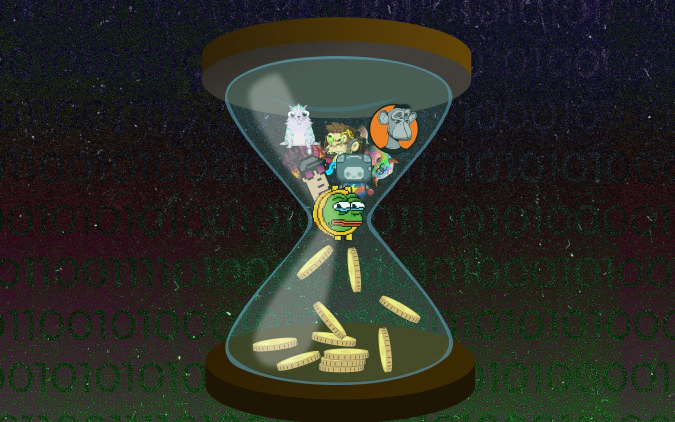
Here we have a financial aspect to take care of. You need a crypto wallet to pay fees for minting your NFT and to get money from selling your work.
There is no need to put too much thought into this step. If you are more interested in creating NFT art, then a crypto wallet becomes just a technical tool. Use the MetaMask service and be happy. An alternative is Coinbase Wallet. Each of them has pretty straightforward set-up processes, so just follow them.
When the wallet is ready, connect it to your NFT platform, using its internal interface.
And then you need to buy cryptocurrency as you will pay for minting (creating an NFT on blockchain).
It’s again a strictly technical step. Use exchanges such as Binance or Crypto.com, and get crypto. It’s Ether (ETH) for the Ethereum blockchain. The exact sum depends on your platform.
Step 5. Mint Your NFT and List It on the Marketplace
The process of minting an NFT includes uploading a file to the platform and entering some attributes on special forms. Everything is clear — follow the instructions on your platform of choice.
For example, on OpenSea, you have to:
- Click your profile icon;
- Select “Create” in the menu;
- Upload your file or paste an external link. Add a name and description;
- Fill in other data for your NFT. Choose a blockchain.
- When NFT is minted, enter your Wallet, and select an item you want to sell. Click the “Sell” button and complete all the forms, including the price.
So, that’s actually it! With these steps, your NFT is available for purchasing. Many factors have the power to affect your success. But you can concentrate on creativity and start a new masterpiece — you already know how to create an NFT out of it.
How Much Does It Cost to Create an NFT?
It’s rather impossible to name the exact sum as it depends on the platform and blockchain you’ve chosen. And also, rules on the marketplaces change. It would be enough to know:
-
Yes, you have to pay a fee for adding your art to a blockchain through an NFT platform (minting).
-
You can list an NFT for free on the Rarible platform. This is an option of a delayed mint, when you first list your art on the marketplace and pay for minting only when someone purchases it. It’s a decent way for beginners who are not ready to spend money but want to know how to start creating NFT art.
If you mint and sell your first-ever NFT, you might need to pay a one-time extra fee. Be attentive and always read the rules of the platform you are going to use.
We at DMarket wish you creative inspiration and luck with selling your works.
Trade on the go - install the mobile app of DMarket from Google Play or App Store. Never miss great prices and unique skins. The best CS2, Dota 2, Rust and TF2 marketplace is always at hand!


For more NFT-related info, stay tuned to us on Facebook and Twitter.











